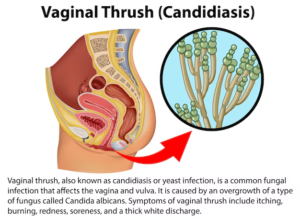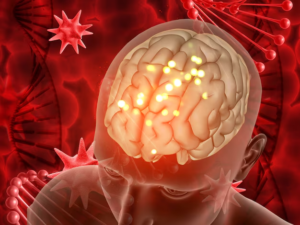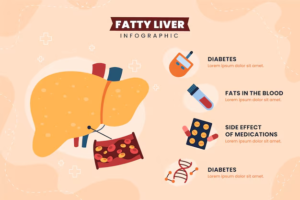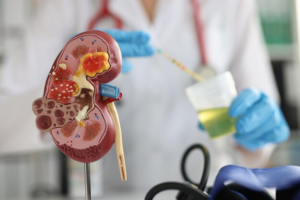Understanding Tendinitis and Its Ayurvedic Approach
Understanding Tendinitis and Its Ayurvedic Approach, a common musculoskeletal condition, occurs when a tendon—the thick fibrous cords that attach muscle to bone—becomes inflamed. This inflammation can lead to pain, stiffness, and restricted movement, affecting daily activities and quality of life. While conventional treatments often focus on pain relief and inflammation reduction, Ayurveda offers a holistic approach that addresses not just the symptoms, but the underlying causes of tendinitis.
What is Tendinitis?

Tendinitis can occur in various tendons throughout the body, including the elbow (tennis elbow), shoulder (rotator cuff tendinitis), knee (jumper’s knee), and Achilles tendon. It often results from repetitive motion, overuse, or acute injuries. Common symptoms include:
- Pain and tenderness around the affected tendon
- Stiffness, especially in the morning
- Swelling and warmth over the tendon
- Reduced range of motion
The Ayurvedic Perspective on Tendinitis
In Ayurveda, health is viewed as a balance of the three doshas: Vata, Pitta, and Kapha. Each dosha represents different elements and qualities in the body:
- Vata: Air and space, associated with movement and communication.
- Pitta: Fire and water, linked to metabolism and transformation.
- Kapha: Earth and water, relating to structure and stability.
Tendinitis is typically seen as an imbalance in the Vata dosha, leading to increased dryness and inflammation in the tissues. Ayurvedic treatments aim to restore this balance through a combination of dietary changes, herbal remedies, lifestyle modifications, and therapeutic treatments.
Ayurvedic Diagnosis
An Ayurvedic practitioner assesses an individual’s unique constitution (Prakriti) and current state of health (Vikriti) through a detailed examination. This includes:
- Pulse Diagnosis: Evaluating the pulse to understand the dosha imbalance.
- Tongue Examination: Observing the tongue’s color, coating, and texture for signs of toxicity or imbalance.
- Physical Assessment: Checking the affected area for pain, swelling, and mobility.
Based on these assessments, a personalized treatment plan can be developed.
Ayurvedic Treatments for Tendinitis
1. Herbal Remedies
Several herbs are beneficial for managing tendinitis:
- Turmeric (Curcuma longa): Known for its anti-inflammatory properties, turmeric can be consumed as a supplement or added to food. Its active compound, curcumin, helps reduce pain and swelling.
- Ginger (Zingiber officinale): Ginger is another powerful anti-inflammatory herb. Drinking ginger tea or consuming it in food can aid in reducing inflammation.
- Ashwagandha (Withania somnifera): This adaptogenic herb helps combat stress and inflammation, promoting overall joint health.
- Boswellia (Boswellia serrata): Known for its potent anti-inflammatory effects, boswellia can be taken as a supplement to alleviate pain and improve mobility.
2. Dietary Modifications
Diet plays a crucial role in Ayurvedic healing. To reduce Vata aggravation, consider the following dietary guidelines:
- Warm, Nourishing Foods: Incorporate cooked foods, particularly soups and stews, which are easier to digest and provide warmth to the body.
- Healthy Fats: Include sources of healthy fats, such as ghee, olive oil, and avocados, which help lubricate the joints.
- Anti-inflammatory Foods: Focus on fruits and vegetables rich in antioxidants, such as berries, leafy greens, and cruciferous vegetables.
- Hydration: Drink plenty of warm fluids, including herbal teas, to keep the body hydrated and promote joint health.
3. Lifestyle Changes
Adopting a balanced lifestyle is essential for managing tendinitis:
- Gentle Exercise: Engage in low-impact exercises like yoga or swimming to maintain mobility without straining the affected tendon. Specific yoga poses, such as gentle stretches and restorative poses, can be particularly beneficial.
- Rest and Recovery: Allow adequate time for recovery, avoiding activities that exacerbate pain. Incorporate rest periods into your routine to prevent further strain.
- Stress Management: Practice stress-reducing techniques such as meditation, deep breathing, and mindfulness. Stress can contribute to inflammation and exacerbate pain.
4. Panchakarma Therapies
Panchakarma, a key component of Ayurvedic medicine, consists of a series of detoxification treatments designed to cleanse the body and restore balance. For tendinitis, relevant therapies may include:
- Abhyanga (Oil Massage): A warm oil massage can help improve circulation, reduce stiffness, and alleviate pain. Using herbal oils infused with anti-inflammatory properties can enhance the benefits.
- Swedana (Steam Therapy): Steam therapy can help open up the channels of circulation, allowing toxins to be released while soothing sore muscles and tendons.
- Basti (Enema Therapy): This therapy helps to detoxify the body and balance the doshas. It is particularly effective in managing Vata imbalances.
Integrating Ayurveda with Conventional Treatments
While Ayurvedic remedies can be effective, they can also complement conventional treatments. It’s important to consult with healthcare providers before starting any new treatment regimen, especially if you are currently undergoing conventional therapies. Combining both approaches can lead to a more holistic and effective healing process.
Precautions and Considerations
- Consult a Qualified Practitioner: Always seek advice from a qualified Ayurvedic practitioner to ensure personalized treatment that suits your specific needs.
- Monitor Symptoms: Keep track of your symptoms and any changes in your condition. If you experience increased pain or discomfort, consult your healthcare provider immediately.
- Avoid Self-Medication: While herbs and dietary changes can be beneficial, avoid self-diagnosing or self-treating without professional guidance.
- Commit to Lifestyle Changes: Healing from tendinitis requires a commitment to long-term lifestyle changes, not just short-term fixes.
Conclusion
Tendinitis can be a challenging condition, but with the right approach, it is manageable. Ayurveda offers a holistic framework that addresses both the physical and emotional aspects of health, promoting overall well-being and balance. By integrating dietary changes, herbal remedies, lifestyle modifications, and therapeutic treatments, individuals can find relief from tendinitis and restore harmony to their bodies. Embracing these Ayurvedic principles can lead to a healthier, more active lifestyle, free from the limitations of pain and inflammation.








Leave a reply